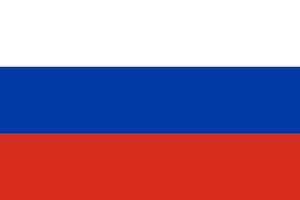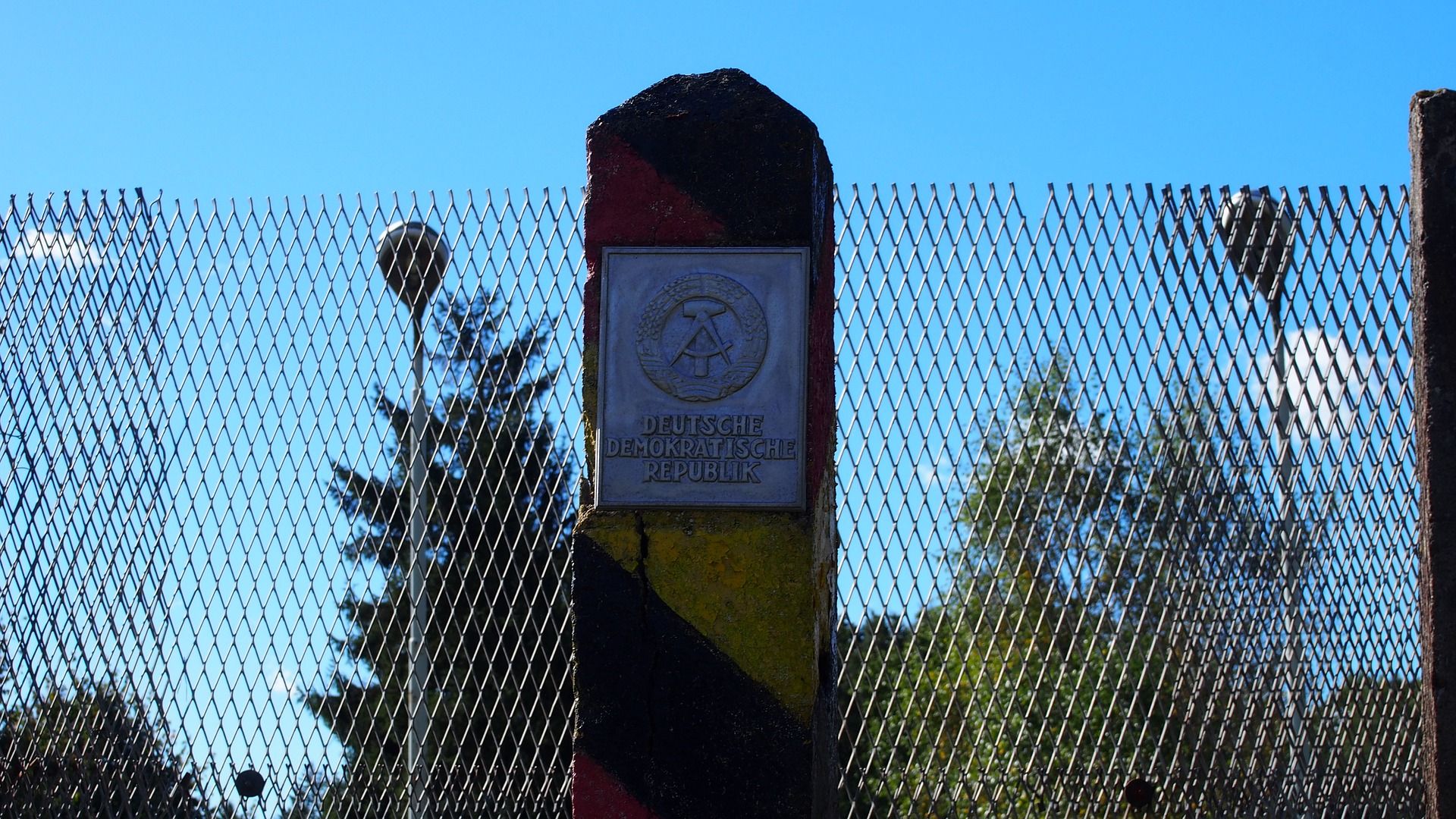On November 9, 1989, the GDR (Deutsche Demokratische Republik) gave up its border security to the FRG (Bundesrepublik Deutschland). The images of euphoric citizens streaming into West Berlin broadcasted in a continuous loop cannot hide the reality: The opening of the border sealed the future of socialism in Germany. Annexation, liquidation, mass unemployment and the subjugation of the entire GDR population were the result.
In view of the fascist continuity in the FRG, which was built into an aggressive frontline state against socialism, the ‚Wall‘ was also a protective rampart against fascism. The huge settlement movement that neo-fascists set in motion after 1989 in order to spread into the GDR underlines the character of this protective rampart against the aggressors and roll-back strategists from Bonn and Washington. Without the ‚Wall‘ there would have been war, which not only Kennedy knew.[1] The Generals Heinz Kessler and Fritz Streletz, who dedicated a book of the same title to this topic, also provide impressive evidence of this.[2]
To this day, bourgeois authors and politicians try to distract from the true causes of the neo-fascist movement and blame the GDR for the high popularity of right-wing parties in East Germany. The fact is, that after the annexation of the GDR, anti-fascism and communist consciousness were fought against in the GDR population with considerable effort and an orchestrated, campaign-like approach – not least by fascist forces that came to East Germany from the West.
Overcoming the protective wall
One could now discuss how the West German media agitated against migrants while the FRG relentlessly plundered every corner of the GDR economy and destroyed hundreds of thousands of livelihoods. It would also be worth taking a look at the so-called GDR reappraisal, because here neo-fascists were involved in the new historiography and the purges of Marxist teaching staff. One could also talk about how numerous anti-fascist monuments were erased and fascists rehabilitated, while the anti-fascist culture of the GDR was banished. In light of 35 years of the opening of the border, the article aims to show how the fall of these border fortifications set in motion an unprecedented neo-fascist relocation movement.
Already before the opening of the border, West German neo-fascists were deliberately smuggling music and propaganda into the GDR. As a result, visits by West German neo-Nazis to the ranks of the skinhead and hooligan scene became more frequent. An important role in this was played by the network Gesinnungsgemeinschaften der Neuen Front (Community of Conviction for the New Front), which was set up by the West German neo-Nazi cadre Michael Kühnen and in which he gathered numerous fascists around him. Among them were some fascists who had been redeemed by the FRG and had previously served their prison sentences in the GDR[3] – violent thugs and ideologues who were to spread the poison of anti-communism and racism.
In the 1980s, Kühnen’s network increasingly developed into a large umbrella organization, which not only focused on contacts in the GDR, but was also well connected with neo-fascists from the USA and other countries.[4] The Community of Conviction for the New Front maintained dozens of front structures and close contacts with numerous parties.[5] Not only the front organisations, but also the leadership were riddled with informants who invested their not exactly meagre salaries from the Office for the Protection of the Constitution (the domestic intelligence agency) into political work.[6]
Leader Kühnen not only had Europe-wide contacts in the neo-Nazi scene, but was also networked with the Office for the Protection of the Constitution. While the Lower Saxony State Office for the Protection of the Constitution allegedly “could no longer find” all files on these activities and networks, a dossier from the GDR State Security (Staatssicherheit) uncovered the connections. The State Security of socialist Germany, which had been collecting investigations on Kühnen since 1970 and closely monitoring his political work, stated in a report that Kühnen had been picked up from prison in a vehicle belonging to the intelligence agency after his release in 1982.[7] The status report from the responsible Main Department III of GDRs state security drew the following conclusion: “It is possible that K.’s imprisonment for several years had been used to recruit him as an informant or for cooperation in another form.”[8]
A few years later, Kühnen developed the strategy paper Arbeitsplan Ost (Workplan East) for the umbrella organization Community of Conviction for the New Front. All of the front structures, as well as other neo-fascist organizations and parties, were guided by this work plan. The opening of the border between GDR and FRG on November 9, 1989 was the starting signal. According to Michael Kühnen, he was able to cross the border “with the help of local comrades.“[9] Dozens of neo-fascist cadres from Kühnen’s networks, as well as members of the New Right, followed his example.
Building a neo-fascist movement
The neo-fascists who moved to the GDR built up structures and groups and quickly began to buy or occupy properties in order to dominate entire neighbourhoods. It was not long before acts of violence and pogroms against anti-fascists and foreigners followed this development, which focused primarily on young people. Under the patronage of Michael Kühnen and the Community of Conviction for the New Front, offshoots of the Freiheitliche Deutsche Arbeiterpartei (Free German Workers‘ Party) and the NPD (National Democratic Party of Germany) were established and dozens of new organizations sprang up, including the Lichtenberger Front and the Deutsche Alternative.[10] The demonstrations against the policies of the GDR were increasingly joined by neo-fascist actors who recognized a point of contact in the anti-communist character of these demonstrations. Neo-fascists were able to appear unhindered with banners and banners from at least March 1990 onwards.[11]
Despite being humiliated and pushed back into the private sphere by the FRG’s ‚Treuhand‘ politics, such activities repeatedly met with anti-fascist resistance by the East German People. Be it the protest against the remodeling of concentration camps, the resistance against the demolition of monuments or joint actions against the activities of newly appointed Western fascists in the universities of the annexed GDR. Even Rainer Eppelmann, chairman of the Commission for the Reappraisal of GDR History, was dismayed to discover that large sections of the population wanted to preserve their GDR anti-fascism.[12]
The amnesty for political prisoners in the GDR on December 6, 1990 strengthened the ranks of neo-fascists in the annexed GDR from one release to the next.[13] Among them were the thugs from the attack on the Zion Church[14], as well as the later so-called ‚Führer of Berlin‘ Ingo Hasselbach.[15] The fascist cadres, most of whom had either been released or had traveled from West Germany, not only supported the establishment of structures and networks, but also toured the GDR with various lectures and invited fascists from abroad. For example, David Irving was invited to Dresden at the invitation of the German People’s Union (Deutsche Volksunion) to shape the myth of the “Allied bombing holocaust” in several lectures. The costs of his commissions and speeches were borne by the west-german millionaire and founder of the neo-fascist German People’s Union, Gerhard Frey.[16]
Intimidation and terror
In 1990, the released neo-Nazi Ingo Hasselbach founded the National Alternative (Nationale Alternative) in Berlin in collaboration with Michael Kühnen. The 800-members strong organization occupied a house and stockpiled over 100 machine guns and 20 bazookas there. Nazi structures were set up in almost all major cities, sometimes with paramilitary training.[17]
The increased activity of these neo-fascist groups went hand in hand with violent excesses and pogroms. Jewish cemeteries and graves of Red Army soldiers and communists were defaced. “Sau Juden” (Jewish Pigs) and „Juden Raus“ (Jews Out) smearings, such as those on the graves of Helene Weigel and Bertolt Brecht, were not isolated cases.[18] The read army memorial at Treptower Park in Berlin also fell victim to neo-fascist rioters. The sarcophagi and statues in honor of the Soviet liberators were smeared with fascist slogans. However, the action did not go unanswered and resulted in a strong anti-fascist protest, which was joined by 250,000 GDR citizens on January 3, 1990.[19]
For the first time since the attempted coup in 1953, radical right-wing slogans such as “Rotfront Verrecke” (“Rotfront perish”) or “Kanaken Raus” (“immigrants out”) could be heard loudly and publicly at the Monday protests against GDR and self-organized demonstrations.[20] On the night of 2nd to 3rd October 1990, the night of the final annexation of the GDR, over 1,500 armed neo-Nazis attacked anti-fascists, squatters and migrants in the GDR in sometimes pogrom-like actions. In total, there were 30 violent and coordinated attacks in various cities.[21]
State backing and support
The slogans and graffiti were followed by attacks and pogroms. In 1992, more violent right-wing extremist crimes were recorded than at any time since 1949 in the Federal Republic of Germany. This upswing would have been unthinkable without the deliberate ignorance of the German authorities and the support of the intelligence service as well as the racist smear campaigns by the media and political parties.
In Dresden, Leipzig, Halle, Jena and Weimar, right-wing extremist mobs were able to carry out attacks and arson assaults almost unhindered.[22] The pogroms in Hoyerswerda and Rostock were tolerated. The days of chases and attacks on foreigners were accompanied by media coverage of the so-called ‚asylum problem‘, while the police let the fascists get away with it.[23]
The former CDU/FDP federal government used the wave of racist violence to further fuel the ‚asylum debate‘ that it itself had sparked, which the Social Democrats (SPD) also joined shortly afterwards. In 1993, the basic right to asylum was finally abolished. Media and politicians gave this development a head start. Immediately after the Rostock-Lichtenhagen pogrom, Eckhardt Rehberg, then leader of the CDU parliamentary group in the Schwerin state parliament, declared: “The fact that foreigners do not know our customs and traditions and perhaps do not even want to get to know them disturbs the sensitivities of our citizens.“[24]
The refascization of East Germany
This process, unthinkable without the opening of the borders, was more than the so-called ‘baseball bat years’, as the media has labelled them. The sole focus on neo-fascist thugs distracts from the fact that the re-fascization of East Germany was targeted with the opening of the borders. Politics and the media covered up and supported this re-fascization. Within a short period of time, anti-fascist and communist positions were to be marginalized among the population. The neo-fascist movement built up by the FRG provided a correspondingly violent backdrop of threats, which at the same time offered young people with no prospects a place to go.
While the neo-fascist movement was intended to intimidate opponents and integrate protest potentials, actors of the New Right were integrated into the ruling political system for an ideological offensive against the remnants of GDR anti-fascism. Monuments were moved or torn down, schools and streets were renamed, all anti-fascist mass organizations were banned and history got rewritten.
In the GDR, on the other hand, fascists and war criminals were consistently expropriated and persecuted: fascist organisations were never to be allowed to operate in the future again. Racism and the fascist past were countered by internationalism, anti-fascism and a broad reappraisal of fascist machinations. The militaristic state apparatus and the monopolies were expropriated and power in the new state was placed in the hands of anti-fascists. While former concentration camp inmates took up government work in the GDR, in the FRG their old guards and tormentors got back to work in the state and administration. In the course of the annexation of this anti-fascist state, the re-fascization of the GDR got implemented.
This re-fascization is fundamental to understanding the social development from the 1990s to the present day. It contains two central tendencies: on the one hand, the development of a neo-fascist movement in East Germany and, on the other, the dismantling of GDR anti-fascism. 35 years after the opening of the borders, the effects of this policy are still visible today. Anyone looking for the roots of right-wing and fascist positions would be well advised to take a look at the rulers of the Federal Republic. There, fascism was never honestly and consistently broken with after 1945.
[1] Kennedy commented on the GDR’s border security with the words: “The Wall is not a very nice solution. But at least it is better than war.”
[2] The 240-page monograph provides in-depth insights into the causes and necessity of the border fortifications of August 13, 1961 and sheds light on how they put a stop to NATO’s war plans.
[3] Marulanda, Geronimo (2019): Die DDR und der Neue Faschismus, in: Antifa Nordost und Antifa Westberlin (Hrsg.): Deutschland ist Brandstifter. Broschüre gegen den BRD-Imperialismus und den Mythos Friedliche Revolution, ohne Verlag: Berlin, S. 90f.
[4] ibid
[5] ibid
[6] Wrusch, Paul (2011): Verfassungsschutz und Naziszene. Thüringer Kameraden, in: taz: https://taz.de/Verfassungsschutz-und-Naziszene/!5107557/.
[7] Förster, Andreas (2019): Verstrickt mit Ober-Neonazi Michael Kühnen, in: Frankfurter Rundschau: https://www.fr.de/politik/verstrickt-ober-neonazi-michael-kuehnen-11050511.html.
[8] ibid
[9] Eskalation der Gewalt – Deutschland 1992, in: Youtube (from min. 7:15): https://www.youtube.com/watch?v=FjfZxupgkZc.
[10] Marulanda, Geronimo (2019): Die DDR und der Neue Faschismus. S. 90f.
[11] Autorenkollektiv Unentdecktes Land (2024): Erst blühende Landschaften, dann böse Migranten, ohne Verlag: Berlin, S. 5.
[12] Deutscher Bundestag Referat Öffentlichkeitsarbeit (1994): Aufarbeitung von Geschichte und Folgen der SED-Diktatur. Antifaschismus und Rechtsradikalismus in der SBZ/DDR, in: Protokoll, S. 1f.
[13] Ahbe, Thomas (2007): Der DDR-Antifaschismus. Diskurse und Generationen – Kontexte und Identitäten. Ein Rückblick über 60 Jahre (Texte zur politischen Bildung H. 39), Rosa Luxemburg Stiftung: Leipzig, S. 43.
[14] On October 17, 1987, several right-wing extremist skinheads attacked a concert in East Berlin and injured several people. The thugs were sentenced to long prison terms by the GDR judiciary in high-profile trials.
[15] Hockenos, Paul (2013): Free to Hate. The Rise of the Right in Post-Communist Eastern Europe. Routledge: London, S. 86–87.
[16] Vollhardt, Ulla-Britta (2024): Rechtsextremer Verleger, Journalist und Politiker (DVU), in: ns-doku münchen: https://www.nsdoku.de/lexikon/artikel/frey-gerhard-240.
[17] Lewis, Rand (1996): The Neo-Nazis and German Unification, Praeger: London, S.25ff.
[18] Robert Havemann Gesellschaft (ohne Jahr): 05.05.1990 – Antisemitische Schmierereien am Grab von Berthold Brecht und Helene Weigel, in: Havemann Gesellschaft: https://www.havemann-gesellschaft.de/05051990-antisemitische-schmierereien-am-grab-von-berthold-brecht-und-helene-weigel/.
[19] Robert Havemann Gesellschaft (ohne Jahr): „Faschistischer Eintopf“ am sowjetischen Ehrenmal, in: https://www.havemann-gesellschaft.de/en/actual/aus-dem-archiv/faschistischer-eintopf-am-sowjetischen-ehrenmal/.
[20] Autorenkollektiv Unentdecktes Land (2024): Erst blühende Landschaften, dann böse Migranten, ohne Verlag: Berlin, S.5.
[21] Ohne Autor (2021): zweiteroktober90. Die Gewalt der Vereinigung, in: Rosa Luxemburg Stiftung: https://www.rosalux.de/news/id/44906/zweiteroktober90-die-gewalt-der-vereinigung.
[22] Werner Nils (2022): „Auf dem rechten Auge blind“: Freie Rechte Jugend nach der Wiedervereinigung, in: mitteldeutscher Rundfunk: https://www.mdr.de/geschichte/ddr/deutsche-einheit/wiedervereinigung/freie-rechte-jugend-baseballschlaegerjahre-100.html.
[23] Ohne Autor (2022): Rostock-Lichtenhagen 1992. Ein Polizeidebakel, in mitteldeutscher Rundfunk: https://www.mdr.de/geschichte/zeitgeschichte-gegenwart/politik-gesellschaft/was-wurde-aus-der-volkspolizei-rostock-lichtenhagen-randale-100.html. Und: Kleffner, Heike (2016): Generation Hoyerswerda, in: Amnesty International: https://www.amnesty.de/journal/2016/oktober/generation-hoyerswerda.
[24] Kleffner, Heike (2016): Generation Hoyerswerda, in: Amnesty International: https://www.amnesty.de/journal/2016/oktober/generation-hoyerswerda.







